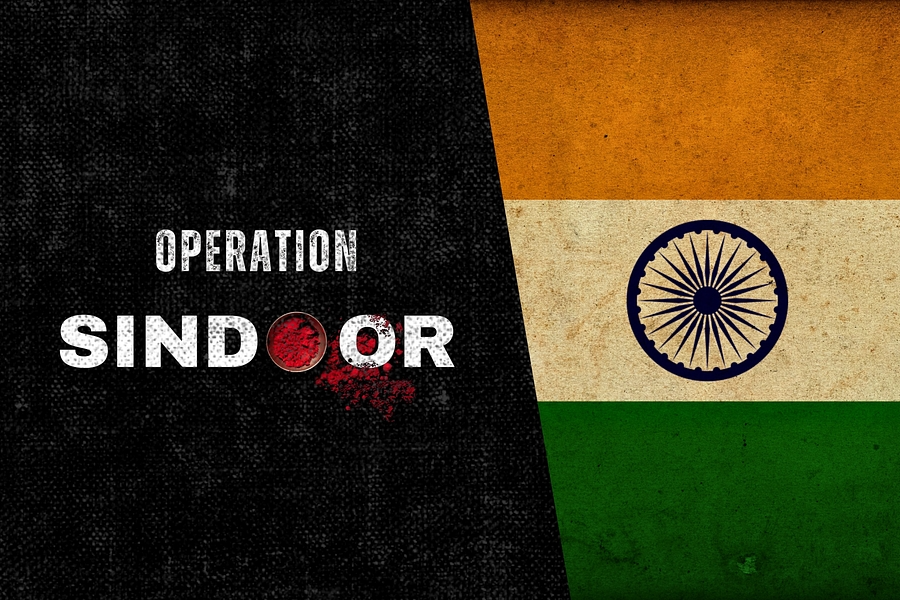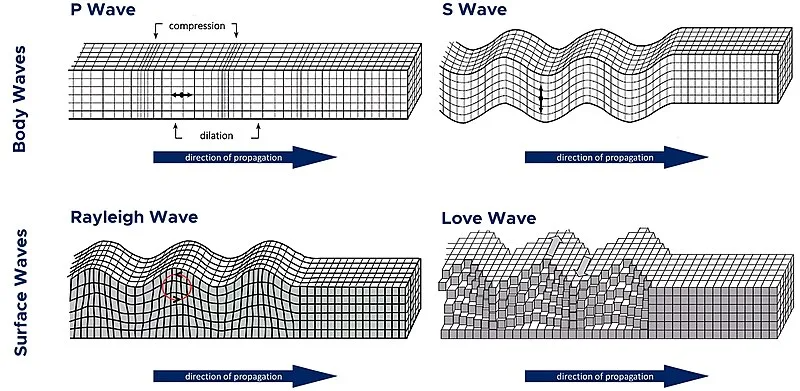August 26th Current Affairs
Table of Contents
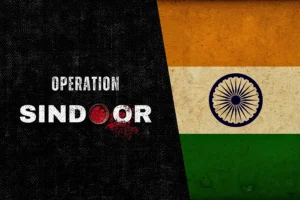
Operation Sindoor
July 21st Current Affairs Home / Operation Sindoor Why in News? Parliament’s Monsoon Session, starting July 21, 2025, is expected to feature
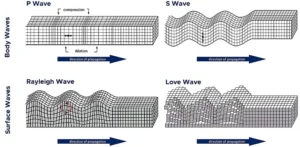
Alaska Earthquakes
July 21st Current Affairs Home / Alaska Earthquakes Why in News? On July 21, 2025, Alaska Peninsula was struck by

August 2, 2027 Solar Eclipse
July 21st Current Affairs Home / August 2, 2027 Solar Eclipse Why in News? A total solar eclipse is set

India’s milestone in clean energy transition
July 21st Current Affairs Home / India’s milestone in clean energy transition Why in News? India achieved a milestone by

‘Baby Grok’, child-friendly AI app
July 21st Current Affairs Home / ‘Baby Grok’, Child-friendly AI app Why in News? Elon Musk’s AI company xAI has announced
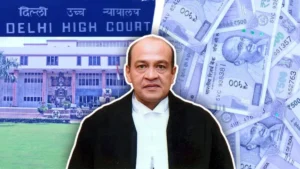
Impeachment proceedings against Justice Yashwant Verma
July 22nd Current Affairs Home / Impeachment proceedings against Justice Yashwant Verma Context On July 22, 2025, impeachment proceedings against
DRDO Tests IADWS, Advancing 'Mission Sudarshan Chakra'
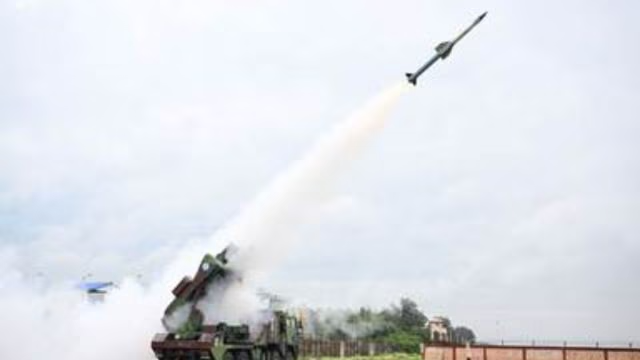
Context
- The Defence Research and Development Organisation (DRDO) successfully conducted the maiden flight tests of the Indigenous Air Defence Weapon System (IADWS) off the Odisha coast.
- This is a crucial step towards developing a homegrown, multi-domain national security shield under Mission Sudarshan Chakra by 2035, fulfilling the Prime Minister’s call for self-reliance in defence.
Background
- The IADWS flight tests follow Prime Minister Narendra Modi’s Independence Day announcement of Mission Sudarshan Chakra, a comprehensive, multi-layered, networked system to protect India and its vital installations from diverse enemy attacks across domains.
- India’s existing air defence capability, notably including the S400 Triumf, Barak 8 MRSAM, and Akash, successfully thwarted attacks during the hostilities following Operation Sindoor.
Government Schemes and Policies
- Mission Sudarshan Chakra: A new, comprehensive, multi-layered, networked system aimed at achieving self-reliance in protecting India and its critical installations from threats like long-range missiles, aircraft, and UAVs. It combines surveillance, cybersecurity, and air defence.
- Aatmanirbhar Bharat Abhiyan (Self-Reliant India): The IADWS development aligns with the broader push for indigenization in defence manufacturing and research, reducing reliance on foreign imports.
- Defence Acquisition Procedure (DAP) reforms: Promote procurement from domestic sources and encourage collaboration between defence research organizations (like DRDO) and the private sector, as is expected for the IADWS project.
Constitutional Provisions, Rules, Laws, UN Resolutions
- Constitutional Provisions: No direct provision is immediately applicable, but the development aligns with the State’s responsibility to ensure the security and integrity of the nation (e.g., Article 51-A, Fundamental Duty to defend the country).
- Rules/Laws: Defence production and testing are governed by the Defence Procurement Policy (DPP) / Defence Acquisition Procedure (DAP) and various DRDO Acts/Rules.
- UN Resolutions: The development is consistent with a nation’s sovereign right to self-defence under Article 51 of the UN Charter. The focus on deterring Unmanned Aerial Systems (UAS) aligns with international concerns over drone proliferation and misuse.
Defence Strategists
- Strategists view this as a necessary shift from platform-centric to network-centric and multi-domain warfare capability.
- The integration of Directed Energy Weapons (DEW) is considered a game-changer, offering a potentially low-cost, high-speed, and high-precision method to counter swarm attacks by drones and missiles, which is a major contemporary threat.
- The planned integration with the IAF’s IACCS (Integrated Air Command and Control System) and the Army’s Akashteer is critical for achieving true jointness and a unified air defence picture across the services.
Significance
- Establishes Multi-layered Capability: The successful engagement of three diverse targets (UAVs, multi-copter) at different ranges/altitudes validates the IADWS’s multi-layered protection capability.
- Technological Maturity: Confirms the maturity and successful integration of complex indigenous systems: QRSAM, VSHORADS, and High Energy Laser DEW.
- Enhanced Area Defence: Significantly strengthens India’s area defence for critical installations and facilities against evolving aerial threats.
- Boost to Self-Reliance: Represents a major milestone in achieving ‘Aatmanirbhar Bharat’ in the critical domain of air defence, saving significant foreign exchange.
Definition of Technical Terms
- Integrated Air Defence Weapon System (IADWS): A multi-layered defence system combining different indigenous weapon platforms (missiles and DEW) with a Centralised Command and Control Centre to detect, track, and destroy multiple types of aerial threats simultaneously.
- Quick Reaction Surface to Air Missiles (QRSAM): Mobile, all-weather air defence system designed to provide a protective shield to the moving armored columns of the Army from aerial attacks.
- Advanced Very Short Range Air Defence System (VSHORADS): Man-Portable Air Defence System (MANPADS) used to neutralize low-altitude aerial threats at very close ranges, often manually operated.
- Directed Energy Weapon (DEW): A system that emits highly focused energy (like laser beams or microwaves) to damage or destroy a target. The High-Power Laser DEW is used for the instantaneous destruction of aerial threats.
SIPRI Report
- The SIPRI (Stockholm International Peace Research Institute) data often highlights India as one of the world’s largest arms importers.
- The success of IADWS, QRSAM, and VSHORADS is a positive counter-trend, indicating a shift towards indigenous production, which could reduce India’s import dependency ranking in future SIPRI reports.
- However, the complete phase-out of foreign systems (like S-400 or Barak 8) is a long-term goal; for now, indigenous and imported systems will continue to coexist, providing necessary strategic depth.
Impact on Defence
- Deterrence: A proven multi-layered, multi-domain defence shield enhances India’s deterrence capability against potential adversaries by raising the cost and complexity of a first strike.
- Jointness: The planned integration with IAF’s IACCS and Army’s Akashteer will enforce tri-service jointness in air defence operations, leading to better resource allocation and threat coordination.
- Doctrine Evolution: The successful inclusion of DEWs will necessitate the evolution of military doctrine and training to maximize the operational benefits of this new technology.
Challenges
- Integration Complexity: Integrating diverse systems (missiles, lasers, radars, C2) from different developers (DRDO labs, private sector) into a seamless operational network is a massive technical and logistical challenge.
- Scaling and Production: Scaling up the successful prototype testing to mass production to meet the 2035 target for a nationwide shield requires significant and consistent industrial capability and investment.
- Countering Evolving Threats: The threat landscape, especially the use of loitering munitions and swarm drones, is rapidly evolving, demanding continuous upgrades and adaptation of the IADWS.
Way Forward
- Ensure timely and sufficient financial allocation for full-scale development and production.
- Strengthen collaboration and technology transfer between DRDO and the private defence industry for accelerated production.
- Prioritize seamless integration of IADWS with existing and future Command and Control systems (IACCS/Akashteer) to maximize network-centric effectiveness.
Prelims MCQ
Q. With reference to India's indigenous air defence program, consider the following statements: 1. The Integrated Air Defence Weapon System (IADWS), successfully tested by DRDO, is a multi-layered shield composed of only missile-based systems like QRSAM and VSHORADS. 2. Mission Sudarshan Chakra is a newly launched initiative aimed at creating a self-reliant, multi-domain national security shield by the year 2035. Which of the statements given above is/are correct?
A. 1 only
B. 2 only
C. Both 1 and 2
D. Neither 1 nor 2
Explanation: The correct answer is B.
Statement 1 is incorrect. The IADWS is indeed a multi-layered shield, but it comprises all indigenous systems, including the missile-based Quick Reaction Surface to Air Missiles (QRSAM) and Advanced Very Short Range Air Defence System (VSHORADS), AND a non-missile system: a high-power laser-based Directed Energy Weapon (DEW). The inclusion of the High Energy Laser-based DEW is a critical component that establishes its multi-layered capability and distinguishes it from purely kinetic (missile) defence systems. The successful test involved the simultaneous destruction of targets by QRSAM, VSHORADS, and the High Energy Laser weapon system.
Statement 2 is correct. The news explicitly states that Prime Minister Narendra Modi announced the launch of Mission Sudarshan Chakra on Independence Day. The mission's goal is to create a comprehensive, multi-layered, networked system aimed at protecting India and its vital installations from a range of enemy attacks across domains by 2035, thereby realizing a self-reliant national security shield. The successful IADWS test is described as a "decisive step" toward achieving the goals of this mission.
Mains Question
Q. Critically analyze the strategic significance of integrating Directed Energy Weapons (DEW) into India’s Integrated Air Defence architecture. (15 marks)
India's Oil Purchases and US Tariffs
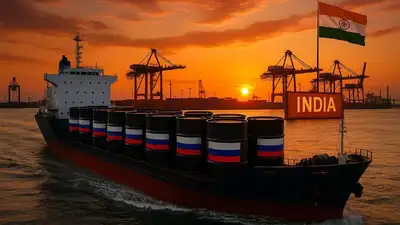
Context
- India’s Ambassador to Russia, Vinay Kumar, stated that India will continue to buy oil from “wherever it gets the best deal,” rejecting US pressure and punitive tariffs.
- This stance, echoed by External Affairs Minister S. Jaishankar, is driven by India’s commitment to energy security for its 1.4 billion people, as tariffs on Russian crude imports are deemed “unfair and unjustified.”
Background
- The diplomatic friction stems from the US imposing an additional 25% duty on Indian imports, raising the total tariff burden to over 50%.
- The US, under President Donald Trump, justifies these tariffs as retaliation for India’s continued deepening of trade ties with Russia, particularly its imports of discounted crude oil, which Washington claims helps fund Russia’s war efforts.
Government Schemes and Policies
- Energy Security: The core of India’s policy is to ensure a stable and affordable energy supply for its population.5 This is a non-negotiable national interest that guides its import decisions.
- Diversification of Sources: India has strategically diversified its crude oil suppliers to avoid over-reliance on any single region, which has made it a significant buyer of Russian oil in the post-2022 period.6
- National Currency Trade Settlement: The use of national currencies for trade settlement with Russia underscores India’s policy of de-dollarization and building a payment mechanism resilient to external pressure and sanctions.
Constitutional Provisions, Rules, Laws, UN Resolutions
- Constitutional Provisions: While no specific provision directly applies, the government’s actions are broadly aligned with its duty to promote the economic well-being and security of its citizens, as a part of its Directive Principles of State Policy.
- Rules/Laws: The US tariffs are levied under its domestic trade laws, which India contests as a violation of international trade principles.
- UN Resolutions: The UN has not imposed a universal oil embargo on Russia, which legally allows countries to continue trade. India’s actions are consistent with its sovereign right to trade in line with its national interests, as long as it doesn’t violate specific UN Security Council resolutions.
Diplomat's responses
- India’s Ambassador to Russia, Vinay Kumar, emphasized that India’s trade decisions are based on commercial viability and market realities, not political pressure. He highlighted the “irony” of US criticism given that other Western nations, including the US itself, continue to trade with Russia.
- External Affairs Minister S. Jaishankar has consistently articulated that India’s foreign policy is guided by its “red lines” and the protection of its domestic interests, particularly its farmers and small producers, who would be hurt by the tariffs.
Significance
- Upholding Strategic Autonomy: India’s defiant stance showcases its commitment to strategic autonomy in foreign policy, refusing to align with a single bloc or subordinate its national interests to those of a great power.
- Energy Market Stabilizer: By purchasing discounted Russian crude, India has helped stabilize global oil prices by absorbing a supply surplus, a fact acknowledged by some Western officials in the past.
- Challenging Unilateralism: This is a clear challenge to the US’s attempt to use its economic leverage to impose its foreign policy goals on other sovereign nations, setting a precedent for other countries.
Definition of Technical Terms
- Punitive Tariffs: Taxes or duties imposed by a country on imported goods from another country as a form of punishment or retaliation for specific actions, such as trade practices or foreign policy decisions.
- Energy Security: The uninterrupted availability of energy sources at an affordable price. For a country like India, which imports over 85% of its crude oil, this is a paramount national security issue.
- National Currencies Trade Settlement: A bilateral or multilateral trade arrangement where transactions are settled in the domestic currencies of the trading partners (e.g., Indian Rupee and Russian Ruble) rather than a third-party currency like the US Dollar.
Trade Nuances
- The US has imposed a 25% additional duty on Indian imports, raising the total tariff to over 50%. This is in addition to the existing reciprocal tariffs, making Indian exports to the US uncompetitive.
- The US’s targeting of India while sparing China, the largest buyer of Russian oil, highlights a geopolitical rather than a purely economic motivation.
- The trade friction could inadvertently push India and Russia to accelerate efforts to boost non-oil trade in sectors like electronics, textiles, and IT services, as highlighted by the Indian envoy.
Geopolitical Theories
- Multipolarity: This event reinforces the theory of a multipolar world, where power is distributed among multiple states or centers of power (US, China, India, Russia, EU), and no single nation can dictate terms to others. India’s actions are a classic example of a rising power carving out its own space.
- Strategic Autonomy: India’s stance is a textbook case of strategic autonomy, a geopolitical approach where a nation maintains the freedom to act in its own national interest without being constrained by alliance commitments or the dictates of another power.
- Neo-realism: From a neo-realist perspective, states are primarily motivated by a desire for power and security in an anarchic international system. India’s move to secure affordable energy is a rational, self-interested action to enhance its economic power and stability, irrespective of US pressure.
Challenges
- Economic Fallout: The increased tariffs could harm India’s export industries and domestic producers, potentially leading to job losses and reduced economic growth.
- Future Relations: Continued friction over trade and foreign policy could damage the broader India-US strategic partnership, which is vital for counterbalancing China and for cooperation in other domains like technology and defense.
- Payments System: While national currency settlement works for now, its long-term viability and scalability to handle a significant volume of trade without facing hiccups remain a challenge.
Way Forward
- Dialogue and Diplomacy: Both countries need to engage in constructive dialogue to resolve trade issues and prevent them from undermining the overall strategic partnership.
- Diversification and Resilience: India must continue to diversify its trade and supply chains to build greater resilience against future external economic coercion.
- Strengthening Domestic Production: Focus on strengthening domestic manufacturing and research to reduce dependence on imports and increase self-reliance, a key pillar of India’s foreign policy.
Prelims MCQ
Q. With reference to India's foreign policy on energy, consider the following statements: 1. India's recent purchases of crude oil from Russia are a deviation from its long-standing foreign policy of non-alignment and strategic autonomy. 2. The US has imposed additional tariffs on Indian goods as a punitive measure for its continued use of a national currency payment system for oil trade. Which of the statements given above is/are correct?
A. 1 only
B. 2 only
C. Both 1 and 2
D. Neither 1 nor 2
Statement 2 is incorrect. The US tariffs are a punitive measure for India's continued purchase of Russian crude oil, which the US believes is financially supporting Russia's military actions. While India and Russia do use a national currency payment system, the tariffs are not a direct punishment for this specific payment method but for the underlying trade itself. The US's primary stated reason for the tariffs is to punish countries it deems are helping Russia's economy.
Mains Question
Q. Assess the role of energy security as a driver of India’s foreign policy in an increasingly multipolar world. (15 marks)
Bihar Special Intensive Revision (SIR)
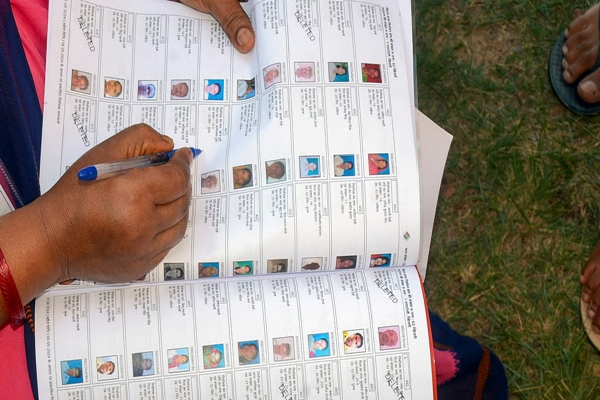
Context
- The Election Commission of India (ECI) has announced that the Special Intensive Revision (SIR) of electoral rolls in Bihar is on schedule.
- This is despite opposition protests, as the ECI has received documents from 98.2% of the 7.24 crore electors, aiming to publish the final rolls by September 30.
Background
- The SIR was initiated by the ECI amid concerns about the accuracy of the electoral rolls.
- The exercise involves a house-to-house enumeration to ensure no eligible voter is left out and no ineligible person is included.
- The revision has been met with controversy and protests from opposition parties, who allege it may lead to the disenfranchisement of a large number of voters, especially women and marginalized communities.
Government Policy
- The Special Intensive Revision (SIR) is a targeted, time-bound exercise to ensure the integrity of the electoral roll. It is a part of the ECI’s broader objective to maintain accurate voter lists.
- This also aligns with the ECI’s ongoing efforts to streamline the electoral process, including a focus on transparency and digital data management.
Constitutional Provisions, Rules, Laws, SC Verdicts, UN Resolutions
- Constitutional Provisions: The ECI’s power to conduct and supervise elections, including the preparation of electoral rolls, is derived from Article 324 of the Constitution. This provision gives the ECI wide-ranging powers to ensure free and fair elections.
- Rules and Laws: The revision process is governed by the Representation of the People Act, 1950, specifically Section 21, which empowers the ECI to conduct revisions. The Registration of Electors Rules, 1960, also provides the procedural framework.
- Supreme Court Verdict: The Supreme Court has recently intervened in the Bihar SIR case, directing the ECI to accept Aadhaar as a valid document for claims and objections. It also expressed surprise at the low involvement of political parties’ Booth Level Agents (BLAs) in the process. This highlights the judiciary’s role in upholding electoral integrity.
- UN Resolutions: While there are no direct UN resolutions on India’s domestic electoral roll revision, the ECI’s actions are consistent with the principles of universal adult suffrage and the right to vote as outlined in international conventions like the Universal Declaration of Human Rights.
Ex-Election Commissioner's Views
- Former Election Commissioners have often stressed the importance of regular and transparent electoral roll revisions for the health of a democracy. They would likely commend the ECI’s focus on accuracy but would also emphasize the need for inclusivity and a citizen-friendly process to avoid the disenfranchisement of the poor and marginalized.
- They would likely caution against procedural rigidities that might exclude genuine voters, particularly those who lack proper documentation or are part of the migrant population.
Significance
- Ensuring Electoral Integrity: The SIR is a crucial step toward creating an accurate voter list, which is the foundation of free and fair elections.
- Transparency and Accountability: The ECI’s detailed press note on the progress of the revision, including the number of documents received and claims filed, is an attempt to enhance transparency and counter allegations of foul play.
- Testing ECI’s Authority: The ECI’s decision to press ahead with the SIR despite political opposition and a Supreme Court intervention demonstrates its resolve to exercise its constitutional mandate independently.
Definition of Technical Terms
- Special Intensive Revision (SIR): A comprehensive, time-bound house-to-house verification process conducted by the ECI to prepare a new electoral roll from scratch or to meticulously clean an existing one. It is more thorough than a regular summary revision.
- Electoral Registration Officer (ERO): A gazetted officer, usually a Sub-Divisional Magistrate or Tehsildar, appointed by the ECI to be in charge of preparing and revising the electoral rolls for an assembly constituency.
- Booth Level Officer (BLO): A local government official, typically a teacher or a clerk, appointed by the ECI to assist the ERO. They are responsible for door-to-door verification and data collection for their assigned polling booth area.
- Booth Level Agent (BLA): An agent appointed by a recognized political party for a specific polling station. Their role is to assist the BLOs and the public in the process of voter registration and revision.
Politics
- The opposition’s protest against the SIR is largely driven by a fear that the exercise could be used to disenfranchise voters from specific demographic groups. The low number of claims filed by BLAs suggests a lack of active participation by political parties in the official process, even while they protest it publicly.
- The ECI’s commendation of political parties’ involvement, despite the low number of formal claims from BLAs, can be seen as an attempt to encourage their cooperation and maintain a neutral stance.
Impact on Electoral Integrity
- A successful and transparent SIR can significantly improve electoral integrity by removing duplicate, deceased, or shifted voters, thereby preventing fraud.
- Conversely, if the process is perceived as biased or leads to the exclusion of a significant number of genuine voters, it can undermine public trust in the electoral system and lead to a perception of an unfair election. The large number of female voters whose names were deleted raises a specific concern that could impact the demographic balance of the electorate.
Challenges
- Documentary Hurdles: Many people, especially in rural and marginalized communities, lack the required documents for verification, making them vulnerable to deletion from the rolls.
- Logistical Complexity: Revising the voter list for a state with over 7 crore electors in a short time frame is a massive logistical challenge that requires meticulous coordination.
- Public Awareness: A significant portion of the population may not be aware of the revision process or the deadlines for submitting claims, leading to their exclusion.
Way Forward
- The ECI should continue to engage with political parties and civil society to address concerns and ensure maximum participation.
- Simplify the documentation requirements and make the process more accessible, especially for vulnerable groups.
- Conduct extensive public awareness campaigns, using both traditional and digital media, to inform voters about the process and deadlines.
- The ECI must act on the Supreme Court’s direction to accept Aadhaar and ensure its directives are implemented uniformly on the ground by BLOs.
Prelims MCQ
Q. With reference to the Special Intensive Revision (SIR) of electoral rolls, consider the following statements:
1. SIR is a routine, time-bound exercise conducted annually by the Election Commission of India to update voter lists across all states.
2. The Booth Level Officer (BLO) is a key functionary appointed by the ECI to conduct house-to-house enumeration during the SIR process.
Which of the statements given above is/are correct?
A. 1 only
B. 2 only
C. Both 1 and 2
D. Neither 1 nor 2
Explanation: The correct answer is B.
Statement 1 is incorrect. A Special Intensive Revision (SIR) is not a routine annual exercise. It is a major, comprehensive revision conducted when the ECI deems it necessary, particularly to address significant inaccuracies or before a major election. The last SIR in Bihar was conducted in 2003. Routine updates happen through a process called "Special Summary Revision."
Statement 2 is correct. The Booth Level Officer (BLO) is a crucial part of the ECI's grassroots machinery. As per the Representation of the People Act, 1950, they are appointed for each polling station and are responsible for door-to-door verification, enumeration, and data collection from electors during the revision process. The news report explicitly mentions that 90,712 BLOs were involved in the Bihar SIR.
Mains Question
Q. Assess the challenges and significance of electoral roll revisions in ensuring free and fair elections in India. (10 marks)
First Human Case of Screwworm in the US
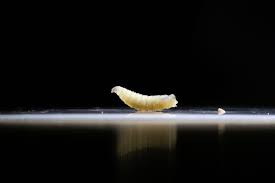
Context
- A person who traveled to the United States from Guatemala has been diagnosed with a flesh-eating screwworm parasite in Maryland, the first confirmed human case of New World screwworm in the US since an outbreak began escalating from Central America.
- The case highlights a serious threat to both public health and the U.S. livestock industry.
Background
- Screwworms, once eradicated from the US in the 1960s using the Sterile Insect Technique (SIT), have been moving northward from South and Central America since late 2023.
- Their larvae infest wounds on warm-blooded animals, feeding on living flesh and potentially causing death.
- The confirmed human case in Maryland underscores the challenge of preventing the spread of the pest across borders.
Legality
- The case is being handled by federal and state agencies under public health and animal health regulations. The US Centers for Disease Control and Prevention (CDC) and the US Department of Agriculture (USDA) have a coordinated response.
- The USDA has implemented border closures to cattle imports from Mexico, citing the pest’s spread, which is a measure permitted under international sanitary and phytosanitary agreements.
- While there are no specific UN resolutions, the World Organisation for Animal Health (OIE) and the Food and Agriculture Organization (FAO) of the UN list screwworm as a notifiable disease, which requires member countries to report cases to them.
Scientists
- Scientists view the case as a serious escalation of the screwworm’s northward spread, posing a significant risk to the eradicated populations of the US.
- They support the use of the Sterile Insect Technique (SIT) as the most effective, environmentally friendly, and proven method for eradication.
- However, they caution that the current production of sterile flies at the Panama facility is insufficient to combat the scale of the ongoing outbreak, necessitating the construction of new facilities.
- Experts also point out that while rare, human cases are a growing concern, especially for travelers to endemic areas and vulnerable populations like the homeless.
Significance
- Public Health Threat: Although human cases are rare, this incident serves as a stark reminder of the zoonotic potential of the disease and the need for heightened vigilance among healthcare professionals.
- Economic Impact: A full-blown screwworm outbreak could cause catastrophic economic losses to the U.S. livestock industry. The USDA has estimated a potential cost of $1.8 billion in Texas alone, due to livestock deaths, labor costs, and medication expenses.
- Transparency and Preparedness: The case highlights a lack of transparency between the CDC and state-level animal health officials, raising questions about the preparedness of the US to handle a large-scale outbreak.
Definition of Technical Terms
- Screwworm (Cochliomyia hominivorax): An obligate parasitic fly whose larvae, or maggots, feed on the living flesh of warm-blooded animals. “Obligate” means they must live as a parasite to survive.
- Sterile Insect Technique (SIT): A method of pest control that involves rearing and releasing overwhelming numbers of sterile insects (usually males) into the wild. These sterile insects compete with wild males to mate with females, causing them to lay infertile eggs, thereby reducing the population.
- Myiasis: The parasitic infestation of the body of a living vertebrate animal by fly larvae (maggots) that feed on the host’s necrotic or living tissue, liquid body substances, or ingested food.
WHO
- The World Health Organization (WHO), in coordination with the OIE, views screwworm infestations as a public and animal health concern.
- The organization focuses on surveillance, prevention, and control of such zoonotic diseases. It advises on measures to prevent human myiasis, especially for travelers to endemic regions, and emphasizes the importance of a One Health approach, recognizing that human health is inextricably linked to animal and environmental health.
Impact on Global Health Systems
- The re-emergence of screwworms in previously eradicated areas challenges the notion of disease containment. It puts pressure on global health systems to strengthen surveillance at borders and to enhance inter-agency coordination (between public and animal health).
- It underscores the importance of a proactive approach to biosecurity and the need for sustained funding for vector-borne disease eradication programs.
- The case also serves as a warning about the potential for travel and globalization to reintroduce eradicated diseases into new regions.
Challenges
- Scalability of SIT: The existing sterile fly production facility in Panama is insufficient to combat the current outbreak’s scale, and building a new facility will take years.
- Cross-Border Cooperation: Effective containment requires seamless cooperation between the US, Mexico, and Central American countries, which can be complicated by political and logistical hurdles.
- Evasion of Detection: The screwworm can be difficult to detect in animals, and its presence in humans can be mistaken for other conditions, leading to delayed treatment and potential spread.
Way Forward
- Accelerate the construction of new sterile fly production facilities to match the scale of the outbreak.
- Strengthen cross-border biosecurity and surveillance measures in collaboration with Mexico.
- Launch a public and animal health awareness campaign to educate people on how to identify and report screwworm infestations.
- Encourage a “One Health” approach by ensuring seamless coordination between human and animal health authorities.
Prelims MCQ
Q. With reference to the New World screwworm, consider the following statements:
1. New World screwworm is a parasitic fly whose larvae are an obligate parasite of living flesh in warm-blooded animals, including humans.
2. The Sterile Insect Technique (SIT) for screwworm eradication relies on releasing genetically modified male flies that produce unfertilized eggs.
Which of the statements given above is/are correct?
A. 1 only
B. 2 only
C. Both 1 and 2
D. Neither 1 nor 2
Explanation: The correct answer is A.
Statement 1 is correct. The news report and scientific literature confirm that the larvae of the New World screwworm fly are an obligate parasite of living flesh. They require a warm-blooded host, which can include cattle, wildlife, and, in rare cases, humans. The larvae burrow into open wounds and feed on the living tissue.
Statement 2 is incorrect. The Sterile Insect Technique (SIT) does not involve the release of genetically modified insects. Instead, it relies on using gamma radiation to sterilize the male flies. The sterile males are then released in large numbers to compete with fertile males. When a wild female mates with a sterile male, she produces unfertilized eggs, thereby reducing the wild population without introducing any modified genes into the ecosystem. The technique is an environmentally friendly alternative to chemical pesticides.
Mains Question
Q. Examine the implications of the re-emergence of the New World screwworm for global biosecurity and public health. (15 marks)
SC Modifies Directive on Stray Dogs
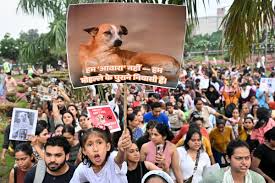
Context
- The Supreme Court has modified its earlier directive, now allowing the release of vaccinated and dewormed stray dogs back into their original localities instead of permanent confinement in shelters.
- This decision broadens the case’s scope to a nationwide level to formulate a uniform policy balancing animal welfare and public safety, while also mandating designated feeding zones.
Background
- The Supreme Court’s initial suo motu directive on August 11, 2025, mandated the confinement of all stray dogs in Delhi-NCR within eight weeks due to a surge in dog bite and rabies cases.
- This directive was met with widespread protests from animal rights activists and dog lovers, who argued that permanent relocation was inhumane, unscientific, and could lead to increased aggression in dogs.
Government Schemes
- Animal Birth Control (ABC) Programme: The Supreme Court’s modified order essentially reaffirms the Animal Birth Control (Dogs) Rules, 2001, which mandate the sterilization and vaccination of stray dogs, followed by their release back into their original territories.
- National Action Plan for Rabies Elimination (NAPRE): This initiative, launched by the Ministry of Health and Family Welfare, focuses on a “One Health” approach to eliminate rabies by 2030, through both human and animal vaccination. The court’s emphasis on vaccination aligns with this national goal.
Constitutional Provisions, Rules, Laws, SC Verdicts, Global Resolutions
- Constitutional Provisions: The directive is rooted in the Directive Principles of State Policy (Article 48A) and the Fundamental Duties (Article 51A(g)), which call upon the State and citizens, respectively, to protect and improve the natural environment, including wild animals and have compassion for living creatures.
- Rules and Laws: The court’s decision is based on the Animal Birth Control (Dogs) Rules, 2001, which provides the legal framework for managing the stray dog population through sterilization and vaccination.
- Supreme Court Verdicts: This specific modification showcases the Supreme Court’s ability to correct course and consider a broader range of scientific and humanitarian views. It reflects a balancing act between the “right to life” (Article 21) of both humans and animals.
- Global Resolutions: The court’s approach is consistent with the global “One Health” concept, a collaborative, multi-sectoral approach to addressing health threats at the human-animal-environment interface, as promoted by international bodies like the World Health Organization (WHO) and the World Organisation for Animal Health (OIE). The World Health Organization’s target of eliminating dog-mediated human rabies by 2030 is also relevant here.
NGOs
- NGOs and animal welfare organizations have overwhelmingly welcomed the Supreme Court’s modified order. They have long argued that capturing and relocating dogs is not only cruel but also a scientifically ineffective way to manage their population.
- They highlight that dogs are territorial animals, and relocation often leads to increased fighting among new dog populations, creating a vacuum that is quickly filled by new, unsterilized dogs. The Animal Birth Control (ABC) program, which the court’s new order supports, is the internationally accepted, and most effective, method for sustainable population control.
Significance
- Upholding a Scientific Approach: The judgment prioritizes a scientifically sound approach (ABC) over an emotionally charged one (mass culling or confinement).
- National Policy: By impleading all states and union territories, the court has set the stage for a uniform national policy to manage the stray dog crisis, which has been a piecemeal effort thus far.
- Promoting Coexistence: The directive on designated feeding zones is a crucial step toward managing human-animal conflict and promoting a more structured coexistence.
Definition of Technical Terms
- Suo Motu: A Latin legal term meaning “on its own motion,” used to describe an action taken by a court without a request from either party.
- Animal Birth Control (ABC): A method of stray animal population management involving sterilization (neutering) and vaccination against rabies, after which the animal is returned to its original territory.
- “One Health” Approach: A collaborative, multisectoral approach to addressing health threats at the human-animal-environment interface. It recognizes that the health of humans, animals, and the environment are interconnected
Anthropological views
- The court’s decision touches on the complex human-canine relationship in India, where stray dogs are often considered “community animals” that co-exist with humans.
- The protests and emotional reactions show that these animals are not just pests but are part of the social and cultural fabric of many communities, even without formal ownership. The designated feeding zones attempt to formalize and manage this relationship.
Impact on Wildlife
- An unchecked stray dog population can have a detrimental impact on local wildlife. Dogs are known to hunt and kill smaller animals, and they can transmit diseases to wild carnivores like jackals and foxes, which are susceptible to canine-borne diseases.
- The court’s focus on vaccination is critical for preventing the spread of diseases like rabies from domestic animals to wildlife, thereby protecting the overall ecosystem.
Challenges
- Implementation Gap: The biggest challenge will be the effective implementation of the court’s order on the ground. Civic bodies may lack the funds, manpower, and infrastructure (e.g., proper ABC centers) to sterilize and vaccinate a massive stray dog population.
- Public Adherence: Ensuring that citizens only feed dogs in designated zones and not on the streets will require a major behavioral change and effective enforcement.
- Defining “Aggressive Dogs”: The court’s order to not release “aggressive dogs” needs a clear, standardized definition to prevent misuse and ensure fair implementation.
Way Forward
- The government must allocate the announced funds of ₹2,500 crores and ensure their timely disbursement to civic bodies to scale up the ABC program nationwide.
- The ECI should launch a nationwide public awareness campaign to educate citizens about the benefits of the ABC program and the importance of adhering to the designated feeding zones.
- Develop clear, scientific guidelines in consultation with veterinary experts and animal behaviorists to define what constitutes an “aggressive dog” to prevent arbitrary action.
Prelims MCQ
Q. With reference to the management of India's stray dog population, consider the following statements:
1. The Supreme Court's latest directive mandates the permanent removal of all stray dogs and their confinement in shelters.
2. The "One Health" approach, as applied to this issue, emphasizes addressing health threats by integrating human and animal health policies.
3. The Animal Birth Control (ABC) program involves the vaccination and sterilization of stray dogs before their release back into their territories.
Which of the statements given above is/are correct?
A. 1 and 2 only
B. 2 and 3 only
C. 1 and 3 only
D. 1, 2 and 3
Explanation: The correct answer is B.
Statement 1 is incorrect. The Supreme Court modified its earlier directive. The new order allows for the release of stray dogs back into their original localities after they have been vaccinated and dewormed. The initial, temporary directive had called for their confinement, but this was stayed.
Statement 2 is correct. The "One Health" approach is a collaborative, multisectoral, and trans-disciplinary approach to health challenges, recognizing that the health of humans is connected to the health of animals and the environment. In the context of stray dogs, it involves a synchronized effort to address rabies in both humans and animals, rather than in isolation.
Statement 3 is correct. The Animal Birth Control (ABC) program is the primary strategy for managing the stray dog population. As per the Animal Birth Control (Dogs) Rules, 2001, the program requires the capture, sterilization, and vaccination of stray dogs, followed by their release in the same area. This approach aims to humanely control the population and eliminate rabies.
Mains Question
Q. Examine the ethical and administrative challenges in formulating a humane and effective policy for India’s stray dog population. (10 marks)



